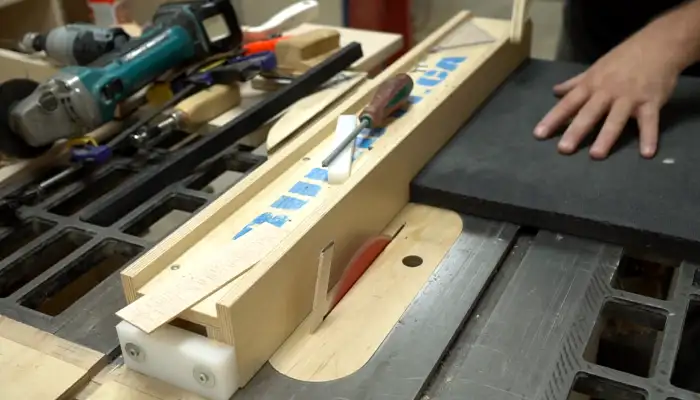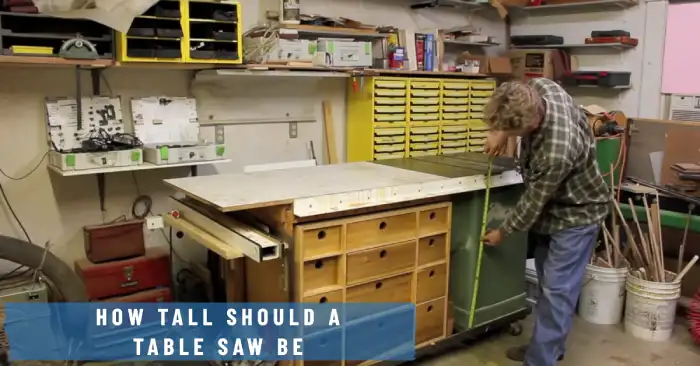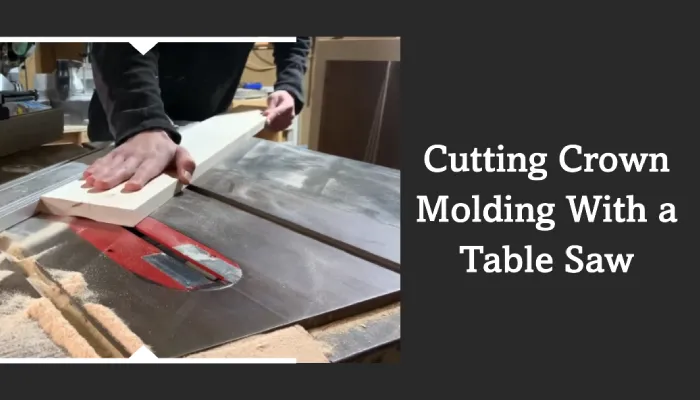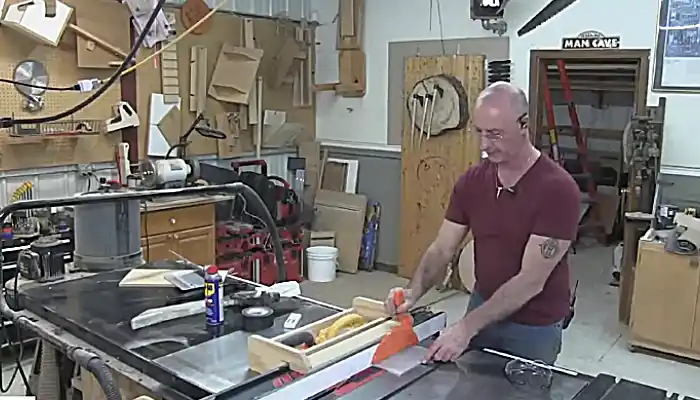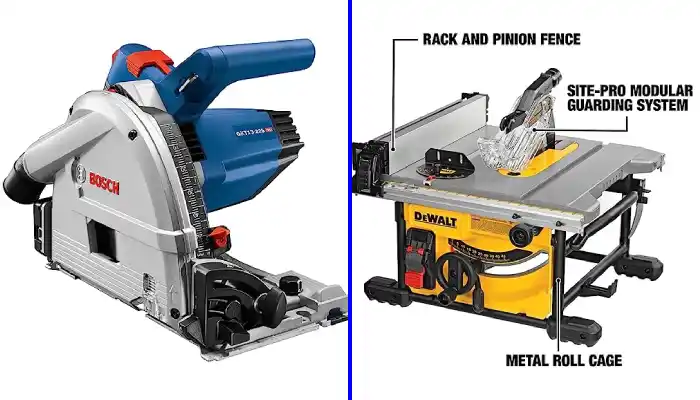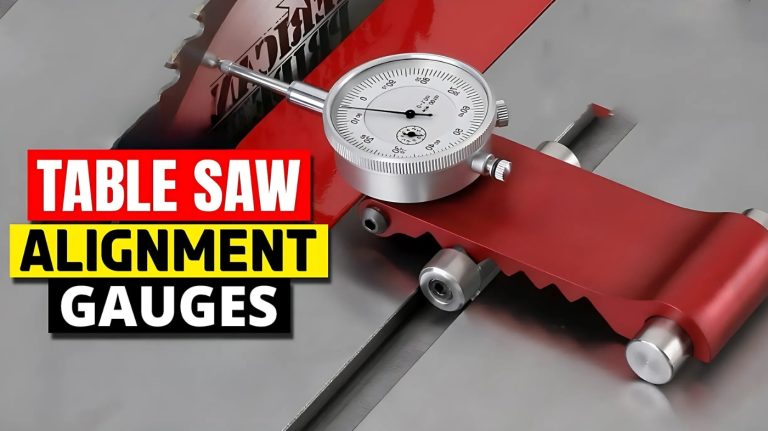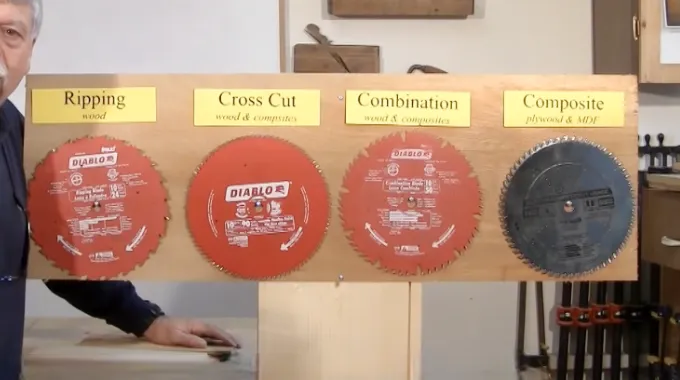Can You Cut Styrofoam With a Table Saw: Discover the Truth [Important]
If you’re thinking of using a table saw to cut up some styrofoam, go for it. It’s totally possible.
To cut styrofoam with a table saw, you need to adjust the blade height to match the thickness of your styrofoam. Then, securely clamp the styrofoam in place to prevent movement during cutting.
Using the proper cutting technique, slowly and steadily guide the styrofoam through the blade. After that, smooth any rough edges with a fine-grit sandpaper.
Let’s jump right in and nail down all the steps for precisely slicing styrofoam with a table saw.
How to Safely Cut Styrofoam With a Table Saw: Step-By-Step
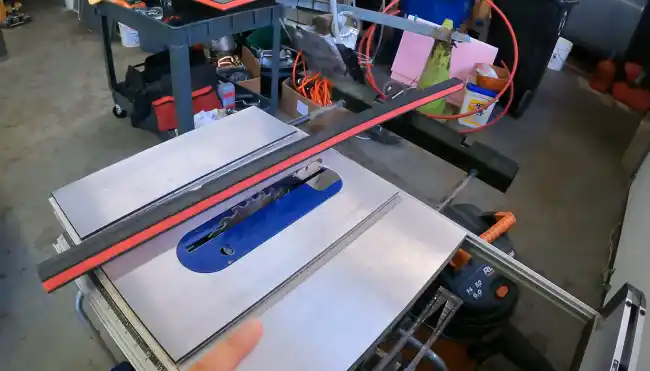
Here are five quick steps to guide you through the process of safely cutting styrofoam with a table saw.
Step #1: Prepare the Work Area
Step #2: Adjust the Blade Height
Step #3: Secure the Styrofoam
Step #4: Cutting Technique
Step #5: Finishing the Cut
Step #6: Clean Up
Now let’s take a look at the steps.
Step #1: Prepare the Work Area
To start, clear any obstacles from the work area and cover the surface with a drop cloth to make cleanup a breeze. This will ensure that you have a safe and clutter-free workspace to cut the styrofoam. Also, make sure you choose a well-ventilated area to ensure proper air circulation while you work.
To prepare the work area, follow these steps:
- Clear the workspace of any clutter or obstacles that may interfere with cutting.
- Make sure the surface is covered with a drop cloth or plastic sheet to facilitate easy cleanup after cutting.
- To ensure proper air circulation while cutting styrofoam, choose a well-ventilated area.
Step #2: Adjust the Blade Height
Before getting into the cutting process, turn off and unplug the table saw. Adjust the blade height to avoid jamming or kickback while still penetrating the styrofoam.
The blade should be set slightly above the surface of the styrofoam sheet or block, allowing it to easily penetrate without cutting too deep.
Keep in mind that styrofoam is a relatively soft material, so there’s no need for a lot of force or pressure when cutting it. In fact, applying too much pressure can cause the material to deform or break apart. Adjusting the blade height properly ensures a smooth and consistent cut without any unnecessary force.
Step #3: Secure the Styrofoam
To keep the styrofoam steady and prevent mishaps, ensure it’s firmly secured with clamps or hold-downs before diving into the cutting process.
This is especially crucial when cutting smaller pieces or irregularly shaped styrofoam, as they tend to move or vibrate during cutting. Ensure the styrofoam remains stable throughout the cutting process.
Any movement or vibration could lead to an inaccurate cut or even injury. Take extra care to secure the styrofoam sheet or block on the table saw’s surface, and check periodically during the cutting process to ensure it remains in place.
Step #4: Cut the Styrofoam
Stand safely from the blade and turn on the table saw, allowing the blade to reach full speed before initiating the cut. When it’s time to cut, slowly push the styrofoam towards the blade with a steady grip, maintaining a consistent feed rate to prevent binding or chattering.
Letting the blade cut is best, applying gentle pressure without forcing the styrofoam through the blade. This will ensure the cut is smooth and precise, without jagged edges or rough spots.
Continue pushing the styrofoam until the cut is complete, and be sure to turn off the table saw before removing the cut piece of styrofoam.
Step #5: Finishing the Cut
Now that the blade has done its magic, it’s time to finish your masterpiece by refining the edges with a sharp knife or saw. This step is crucial in achieving a clean, professional finish.
Using a utility knife or a fine-toothed saw, carefully trim any rough or jagged edges left by the table saw. Ensure the styrofoam is firmly supported during this process to avoid any unnecessary damage or breakage.
Take your time and make small, precise cuts to ensure a perfect cut. Avoid using too much pressure, as this can cause the styrofoam to deform or break.
Once you have trimmed the edges to your satisfaction, run your hand over the surface to check for any remaining rough spots or unevenness. If necessary, use sandpaper to smooth out any imperfections.
Step #6: Clean Up
Once your styrofoam masterpiece is finished, it’s time to clean up the work area by collecting and disposing of foam debris. Turn off your table saw and unplug it before beginning the cleaning process.
Use a vacuum cleaner to collect the foam particles or carefully gather them with a brush or cloth. Remove any remaining foam debris from the table saw’s surface and surrounding area to prevent it from interfering with future cuts.
Once you have removed all the foam debris, dispose of it properly to prevent environmental harm.
What size table saw blade needs to cut styrofoam?
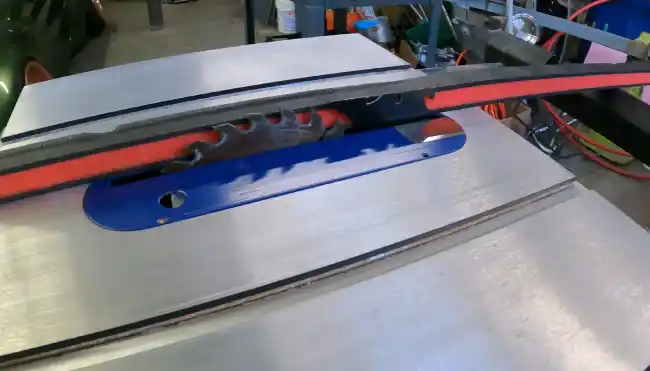
For cutting styrofoam with a table saw, it’s recommended to use a fine-toothed plywood blade with a higher tooth count. A blade with 60 to 80 teeth or more is suitable for cutting styrofoam. The finer teeth on the blade help create a smoother cut and reduce the amount of foam particles created during the cutting process.
You need to note that the diameter of the blade is only one of the important factors to consider when cutting Styrofoam. While a 10-inch blade is commonly used, the tooth count and type of blade will make the biggest difference in the quality of the cut.
What speed should the table saw be set for cutting styrofoam?
When cutting styrofoam with a table saw, it is generally recommended to set the saw at a lower speed, such as around 3,000 to 4,000 RPM (rotations per minute).
This slower speed allows for more control over the cutting process and reduces the risk of overheating or melting the styrofoam.
Please note that specific table saw models may have different speed ranges. So it’s always best to consult the manufacturer’s guidelines or the manual for the recommended speed settings when working with styrofoam or similar materials.
Can you use a dado blade on a table saw to make grooves or slots in styrofoam?
Using a table saw dado blade is not recommended to cut grooves in foam. Dado blades are typically designed for cutting grooves in harder materials like wood, and they may not produce clean or precise results when used on styrofoam.
Styrofoam is a relatively soft and delicate material, and the aggressive cutting action of a dado blade can cause excessive tearing, melting, or even complete destruction of the foam.
It is best to use alternative methods like hot wire cutters, hand tools, or specialized foam cutting tools to create grooves or slots in styrofoam, ensuring cleaner and more controlled cuts without risking damage to the material.
What type of table saw fence is best for cutting styrofoam?
When cutting styrofoam with a table saw, the type of table saw fence you use may not significantly impact the cutting process. Since styrofoam is a lightweight and soft material, it can be easily guided and supported during cutting.
That being said, a fence with a smooth surface and minimal friction can be beneficial. This helps prevent any unnecessary resistance or drag that could affect the accuracy of your cuts. A fence made of aluminum or another low-friction material can work well for cutting styrofoam.
Also, having a fence with an adjustable guide or a T-slot can be advantageous if you need to make repeated or precise cuts. These features allow for easy adjustment and alignment of the styrofoam, ensuring consistent results.
Is it possible to stack multiple styrofoam sheets and cut them simultaneously with a table saw?
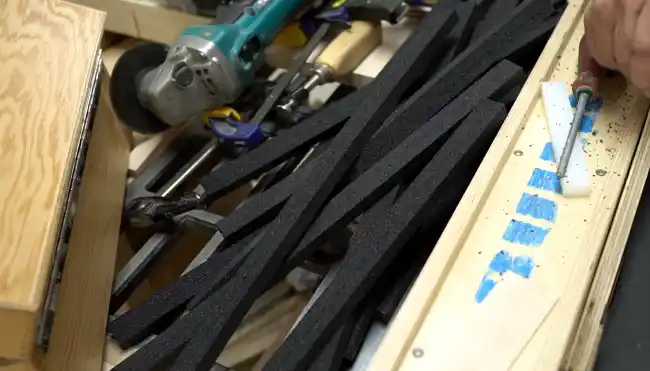
While it may be tempting to stack multiple sheets of styrofoam and use a table saw to cut them simultaneously to save time, it is generally not recommended.
Styrofoam is a lightweight and compressible material, and stacking multiple sheets can result in uneven pressure distribution during cutting, leading to inaccurate and potentially unsafe cuts.
Cutting stacked styrofoam sheets can also increase the risk of the material shifting or binding between the layers, causing kickback or blade damage.
The vibrations generated from cutting multiple layers at once can increase the chances of the stacked sheets separating or becoming misaligned.
Cut Styrofoam Safely and Easily With a Table Saw
Cutting Styrofoam with a table saw can be a safe and simple process if you follow the proper steps. Remember to use a blade with a high tooth count and adjust the blade height accordingly.
Keep fingers away from the blade, and always wear protective gear. A smaller blade may be more precise for intricate cuts, while a larger blade may be more efficient for larger pieces.
Ultimately, the size of the blade will depend on the specific project you’re working on, so be sure to choose accordingly.
So get creative with your foam projects, knowing you have the knowledge and skills to do so safely and effectively.

